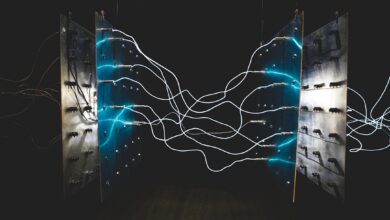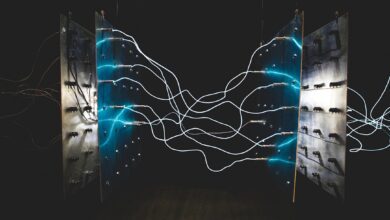Harnessing the Power of Water: Hydropower’s Role in the Renewable Energy Transition and Innovations for a Sustainable Future

As the world grapples with the urgent need to combat climate change and transition towards sustainable energy solutions, hydropower emerges as a key player in the renewable energy landscape. Harnessing the power of flowing water to generate electricity offers a reliable and efficient alternative to fossil fuels and nuclear energy, significantly contributing to energy security and efficiency. In this article, we will explore the multifaceted role of hydropower in the energy transition, its advantages over traditional energy sources, and the latest innovations in energy storage and smart grids that promise to enhance its viability. By understanding these dynamics, we can appreciate how hydropower not only supports global energy trends but also aligns with energy policy goals aimed at fostering a greener future. Join us as we delve into the intricacies of hydropower and its vital position in shaping the energy markets of tomorrow.
- 1. The Role of Hydropower in the Energy Transition: A Sustainable Solution for Renewable Energy
- 2. Comparing Hydropower with Fossil Fuels and Nuclear Energy: A Path to Energy Efficiency and Security
- 3. Innovations in Hydropower: Exploring Energy Storage and Smart Grids for a Greener Future
1. The Role of Hydropower in the Energy Transition: A Sustainable Solution for Renewable Energy
Hydropower plays a pivotal role in the energy transition, serving as a sustainable solution for generating renewable energy. As the world increasingly shifts away from fossil fuels, hydropower stands out due to its ability to provide reliable and efficient energy while supporting energy security. With the global energy trends moving towards decarbonization, the integration of hydropower into the energy mix is essential for achieving climate change goals.
One of the key advantages of hydropower is its capacity for energy storage. Hydropower plants can store energy by pumping water to a higher elevation during low demand periods and releasing it during peak demand, thus enhancing energy efficiency and balancing energy markets. This characteristic makes hydropower a vital component of smart grids, which are designed to optimize energy distribution and consumption.
In addition, hydropower complements other renewable sources like solar power and wind energy. When these sources experience fluctuations in generation due to weather conditions, hydropower can provide a consistent supply, ensuring a stable flow of green energy. This synergy enhances the overall reliability of renewable energy systems and contributes to the development of distributed energy resources.
Investment in hydropower infrastructure is critical for advancing energy policy and promoting energy innovations. Governments and private sectors are increasingly recognizing the potential of hydropower in meeting energy demands, reducing reliance on nuclear energy, and supporting electrification trends such as electric vehicles (EVs). Furthermore, hydropower projects often lead to local job creation and economic growth, demonstrating their alignment with energy economics and energy R&D initiatives.
Moreover, as countries seek to bolster energy exports and minimize energy imports, hydropower can play a strategic role in diversifying energy portfolios while reducing carbon emissions. The synergy between hydropower and other renewable energies, including bioenergy and hydrogen energy, also fosters a comprehensive approach to energy transition, ultimately contributing to a sustainable future.
In conclusion, hydropower is not only a critical player in the global energy landscape but also a key enabler of the energy transition. By harnessing the power of water, it offers a sustainable, efficient, and reliable energy source that is integral to combating climate change and achieving energy security. As we continue to innovate and invest in hydropower, we pave the way for a greener, more resilient energy future.
2. Comparing Hydropower with Fossil Fuels and Nuclear Energy: A Path to Energy Efficiency and Security
As the world shifts towards a more sustainable future, hydropower emerges as a crucial player in the energy landscape, particularly when compared to fossil fuels and nuclear energy. Hydropower is a form of renewable energy that harnesses the kinetic energy of flowing water to generate electricity. This method not only supports energy efficiency but also enhances energy security by providing a stable and reliable supply of power.
In contrast, fossil fuels are finite resources that contribute significantly to greenhouse gas emissions and climate change. While fossil fuels have historically dominated energy markets, their environmental impact has prompted a global energy transition towards cleaner alternatives. Hydropower stands out in this scenario as it produces negligible carbon emissions during operation, making it a key component of green energy initiatives aimed at combating climate change.
Nuclear energy, while a low-carbon option, comes with its own set of challenges. Issues such as radioactive waste management, high initial investment costs, and public perception concerns can hinder its growth in energy markets. Furthermore, nuclear energy is largely dependent on a stable supply of uranium, which raises questions about energy security and sustainability in the long run. In contrast, hydropower utilizes a renewable resource—water—which is abundant in many regions and can be replenished naturally, ensuring a more sustainable energy source.
The integration of hydropower into smart grids enhances energy storage and distribution, allowing for more effective energy management. By balancing supply and demand, hydropower can support the increasing penetration of intermittent renewable sources like solar power and wind energy. This synergy not only boosts overall energy efficiency but also contributes to a more resilient energy system capable of adapting to global energy trends.
Investments in energy R&D related to hydropower technologies can lead to innovations in energy storage solutions, improving the viability of hydropower in energy markets. Enhanced methods for energy transportation, such as pumped storage systems, enable the storage of excess energy generated during peak production times, making it available when demand surges.
As nations strive to meet their energy needs while reducing carbon footprints, hydropower presents a compelling case. By focusing on energy investment in hydropower and other renewable sources, countries can improve energy security and reduce reliance on fossil fuels and nuclear energy. The transition toward a more diversified energy portfolio not only aligns with energy policy goals but also positions nations to become leaders in the rapidly evolving landscape of global energy exports and imports.
In summary, hydropower offers a sustainable, efficient, and secure alternative to fossil fuels and nuclear energy, paving the way for a greener energy future that addresses climate change while meeting the energy demands of a growing population.
3. Innovations in Hydropower: Exploring Energy Storage and Smart Grids for a Greener Future
Innovations in hydropower are vital as we transition towards a greener future, particularly in the context of global energy trends and the urgent need to combat climate change. One of the most promising advancements in this sector is the integration of energy storage systems. These systems enhance the reliability of hydropower by storing excess energy generated during peak production times, which can then be released during periods of high demand. This capability not only increases energy efficiency but also provides a significant buffer against fluctuations in energy markets, making hydropower a more stable renewable energy source.
In addition to energy storage, the development of smart grids is transforming how hydropower is utilized in the broader energy landscape. Smart grids facilitate better management of energy distribution, allowing for the seamless integration of various renewable energy sources such as solar power and wind energy. This integration is crucial for optimizing energy transportation and ensuring energy security, particularly as the world seeks to reduce reliance on fossil fuels and nuclear energy.
Furthermore, innovations in hydropower are also linked to the growing interest in distributed energy systems. By harnessing local water sources for energy generation, communities can enhance their energy independence and contribute to energy exports. This shift towards localized energy production is supported by advancements in energy R&D, which are continuously exploring new technologies for improving hydropower's efficiency and reducing its environmental footprint.
As we look ahead, the role of hydropower in the energy transition will be pivotal. With ongoing investments in carbon capture technologies and the exploration of hydrogen energy, the hydropower industry is poised to play a significant role in achieving a sustainable energy future. By aligning with energy policy that prioritizes green energy solutions, hydropower can continue to contribute to a resilient and economically viable energy system that addresses the challenges of climate change.
In conclusion, hydropower stands as a vital pillar in the global energy transition towards sustainability and energy efficiency. As nations seek to reduce reliance on fossil fuels and embrace renewable energy sources, hydropower offers a reliable and efficient solution that can be seamlessly integrated into existing energy markets. The advancements in energy storage and the development of smart grids enhance hydropower's role in a future powered by green energy, providing the necessary flexibility and resilience to meet fluctuating energy demands.
Comparing hydropower to other energy sources, such as nuclear energy and fossil fuels, highlights its potential to contribute significantly to energy security and climate change mitigation. Furthermore, as global energy trends shift towards increased investment in renewable technologies, hydropower remains a cost-effective option that supports energy exports and imports while reducing carbon emissions.
As we look ahead, the innovations in hydropower, alongside complementary technologies like hydrogen energy and bioenergy, will be crucial in shaping a sustainable energy landscape. By prioritizing energy R&D and adapting energy policies to favor renewable sources, we can ensure a robust response to the challenges posed by climate change and create a cleaner, more efficient energy future. By harnessing the power of water, we not only capitalize on a proven energy source but also pave the way for an environmentally responsible energy economy that benefits generations to come.





